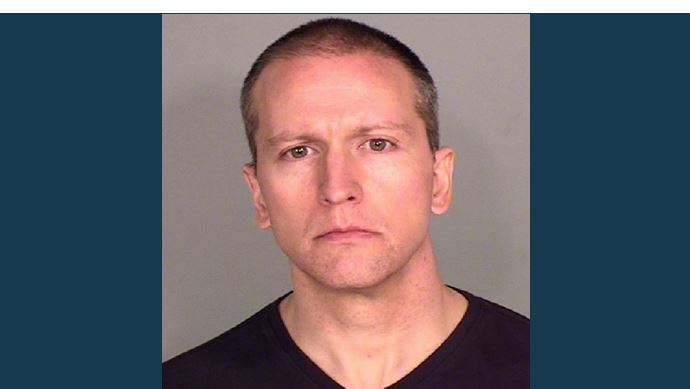March 30 (UPI) — Prosecutors said during the criminal murder trial that began Monday that Minneapolis police officer Derek Chauvin “betrayed” his badge in the death of George Floyd.
Prosecuting attorney Jerry Blackwell began his opening argument by displaying the Minneapolis Police Department badge for the jury.
“You will learn that on May 25 of 2020, Mr. Derek Chauvin betrayed this badge,” Blackwell said.
“It’s a small badge that carries with it a large responsibility and large accountability to the public.”
“They take an oath that, ‘I will enforce the law courteously and appropriately’ and as you will learn, as it applies to this case, ‘never employing unnecessary force or violence,'” he added.
The jurors were shown video of Chauvin kneeling on Floyd’s neck, during which Floyd can be heard saying, “I can’t breathe.”
Blackwell said Chauvin did not remove his knee from Floyd’s neck despite being told twice by other responders on the scene “that they can’t even find a pulse” on Floyd.
In his opening statement, defense attorney Eric Nelson told jurors the case is “clearly more than about 9 minutes and 29 seconds,” which was the length of time that Blackwell said led to Floyd’s death.
“The use of force is not attractive, but it is a necessary component of policing,” Nelson said.
Jurors watched video of the police car Floyd was placed in rocking back and forth.
“This was not an easy struggle,” he said, adding that the anger from a growing number of bystanders prevented officers from attending to Floyd.
“You will learn that Derek Chauvin was doing exactly what he had been trained to do during the course of his 19-year career.”
“I suggest that you let common sense and reason guide you” during the trial, Nelson added.
Witness Donald Williams II, a longtime mixed martial arts fighter, likened the manner in which Chauvin pinned Floyd to the ground as a “blood choke,” which can lead someone to become unconscious and testified that Chauvin performed a “shimmy” that shifted his weight intentionally to tighten the pressure on Floyd’s neck.
Williams added that Floyd apologized to officers as he was pinned down, pleading that he could not breathe and calling for his mother, while likening Floyd’s struggles to a fish gasping for air.
“You see Floyd fade away like the fish in the bag,” he said. “He vocalized that he can’t breathe and ‘I’m sorry.’ His eyes rolled back in his head.”
Jena Scurry, a 911 dispatcher in Minneapolis, testified that she alerted a police sergeant after she saw officers take Floyd from the back of a squad car and push him to the ground live on a surveillance camera.
Scurry said she asked her coworkers if video from the camera had frozen because the restraint of Floyd continued for an extended period of time.
“My instincts were telling me that something’s wrong,” she said.
Scurry began watching the surveillance video after dispatching a squad car to Cup Foods, at the intersection of 38th and Chicago in Minneapolis. Scurry testified that a call came in about a suspect providing a counterfeit bill at the business.
Blackwell said that what Scurry saw was “so unusual and for her so disturbing that she did something she had never done in her career. She called the police on the police.”
She said it was her “gut instinct” that led her to call the sergeant who was a supervisor for the officers at the scene, the audio of the call was played in court.
“I don’t know, you can call me a snitch if you want to but we have the cameras up for [squad] 320’s call, and … I don’t know if they had to use force or not, but they got something out of the back of the squad and all of them sat on this man, so I don’t know if they needed you or not but they haven’t said anything to me yet,” said Scurry.
The sergeant told her that the officers had not said anything, adding it was “just a takedown, which doesn’t count” as a use of force.
In response to questioning from Nelson, Scurry said she was unable to hear what was happening in the interaction between the officers and Floyd and that she was unsure if she was viewing a use of force incident. She also said she did not have the same training as a police officer.
“We don’t ever get to ever see it so when we see it we’re just like, well, that looks a little different,” she said during the call.
The jury has the option of acquitting Chauvin or convicting him on a charge of murder in the second or third degree, or manslaughter in the second degree.
Blackwell on Monday said Chauvin’s restraint of Floyd directly caused the cardiopulmonary arrest that led to his death, stating that he “died one breath at a time over an extended period of time.”
Nelson countered that there were no signs Floyd was asphyxiated or that his airflow was restricted and that methamphetamine and fentanyl were found in his system noting that the cause of Floyd’s death will be a “significant battle” in the trial.
“The evidence will show that Mr. Floyd died of cardiac arrhythmia that occurred as a result of hypertension, coronary disease, the ingestion of methamphetamine and fentanyl and the adrenaline flowing through his body, all of which acted to further compromise an already compromised heart,” he said.
Fifteen jurors were chosen, 12 of whom will decide the case.
Chauvin’s attorneys have said officers followed protocol when they arrested Floyd on suspicion of using a counterfeit bill at the food store. Police argued that he resisted arrest, which led to Chauvin handcuffing him face-down and kneeling on his neck.
Chauvin and two other Minneapolis police officers were later dismissed from the police force over Floyd’s death.






